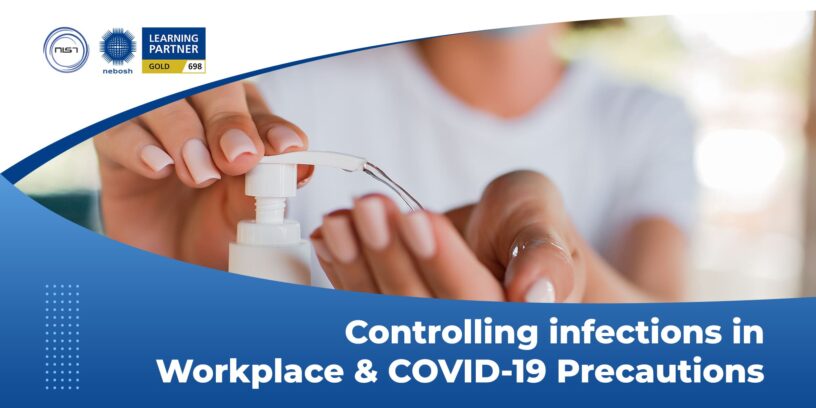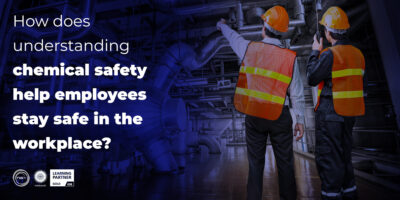Occupational health and safety is about minimising harm and protecting the health of employees and others from risks that are present in work. It includes the use of appropriate preventative measures and health and safety procedures to minimise risks. It also ensures that everyone is protected from exposure to the risk of work-related illness.
In today’s world, where social distancing becomes the need of the hour, all organizations have come up with plans and strategies to manage the situation effectively, so that they do not face any major issues in their workplace operations later on as the pandemic gets under control. The major drawback of infectious workplace is a potential for spread of contagious diseases.
Different ways of infection spread:
Employees can spread an infection in several ways, such as by touch (via shared utensils, food, and drinkware), breathing, sneezing, coughing, or touching the face with a gloved hand. In addition, employees are not always aware of the potential dangers of spreading infectious diseases. In such cases, they are not necessarily careful with their health and spread disease through their ignorance.
In general, some measures to ensure safe working conditions have been considered necessary to prevent spread of infectious diseases. To combat this problem, health care workers are being advised to wear full PPEs, use adequate hand hygiene practices, and clean frequently touched surfaces daily. However, there is still no guarantee that everyone will follow these precautions properly. So, the management has to make sure that employees follow precautions in order to,
- Manage the organization’s environmental health, sanitation and hygiene program
- Ensure the safety of its workforce and ensure a safe working environment for its staff
- Ensure that business continuity plan (BCP) is in place and effective
- Minimize absenteeism and absence from work due to illness or quarantine during this pandemic period
- Protect their own health by staying at home when possible to avoid spreading COVID-19 to others around them
- As per the Center for Disease Control and Prevention (CDC), CDC recommends that companies should implement measures including social distancing, workplace modifications, stay-at-home orders, quarantines, testing, contact tracing, disinfecting high-touch surfaces, and education to their staff members to prevent an outbreak or spread of coronavirus.
An infectious workplace might lead to:
- Sickness
- Absenteeism
- Loss in productivity
- Overrun in projects
- Loss and morale and goodwill among employees
Objective of this training:
The primary objective of this training is to help organisations identify and assess workplace risks, implement appropriate preventive strategies, and develop a system that protects the health of their employees and those who come into contact with them through education and training, as well as the implementation of systems and procedures for identifying potential exposure and disease transmission prevention.
Every workplace has an obligation to protect the health of its employees; for example, by ensuring that they have access to clean drinking water, good ventilation, proper personal protective equipment (PPE), and safe working environment.
Participants will learn about the COVID-19 virus and how it is transmitted among people, identify risk factors that increase your chances of becoming infected and protect yourself.
Steps involved:
- The first step is identifying the source of risk, that is, to know where the infection originates from, whether it is coming from outside or inside the workplace.
- The major routes for transmission of infections are through direct contact with infected persons or their body fluids, by contaminated instruments/materials, through the air by droplets/aerosols, or indirectly, e g., via food or water, or contaminated fomites.
- Infections can occur from occupational exposure to microbes, chemical toxins, physical agents, radiation, drugs, chemicals, biological toxins, infectious diseases, or other agents.
Topics covered during training:
- Why infection Prevention control is necessary?
- Employer and Employee responsibilities
- How infection occurs at workplace?
- Significance, uses, types of PPE and its role in infection prevention
- Personal Hygiene Practices
- Different Strategies for Infection Prevention and Control
- Precautions to be taken to avoid communicable diseases
Mode of delivery:
Online – Live sessions
Benefits of this training:
As a result of this training, learners would be familiar with,
- The symptoms of viral infections and understand how to prevent them
- Know how to identify a case of COVID-19 infection
- Understand what steps need to be taken to stop an outbreak of COVID-19
- Build effective communication skills during an emergency situation
- Identify sources for information and advice on infectious diseases in general
- Prepare for future outbreaks by understanding common viral threats
- Incorporate strategies to deal with these situations into the existing plan
- Create an actionable strategy to respond to emergencies
- Develop effective team working skills and procedures during an emergency
Training Highlights:
- Pre-assessment
- Online – live training through a secure training platform.
- Post- assessment.
- E-copy of the pocketbook.
- Certificates (optional)
Who can attend this training?
This course is open to anyone in a supervisory capacity or as part of their role in an organization’s day-to-day operations, such as management staff, infection control employees, and allied health personnel. In fact, this training can be taken by all employees of a company.
Why NIST?
Occupational health concerns still exist, despite employers’ best attempts to maintain the greatest safety standards in the workplace. Our NIST safety advisors can help you create a safe working environment, making learners ensure that all precautionary requirements are followed inside the workplace. Our workforce has more than 15 years of combined expertise and can help you with: On-the-job Occupational Safety and Health Administration that regulates workplace safety Hygiene in Industry. We take pleasure in providing expert services with integrity and expertise, and we make every effort to deliver exceptional customer service!
For further details regarding the training, contact our client servicing team @ +91 9384663536 or mail us at corporate.sales@nistinstitute.com.














Leave a Reply